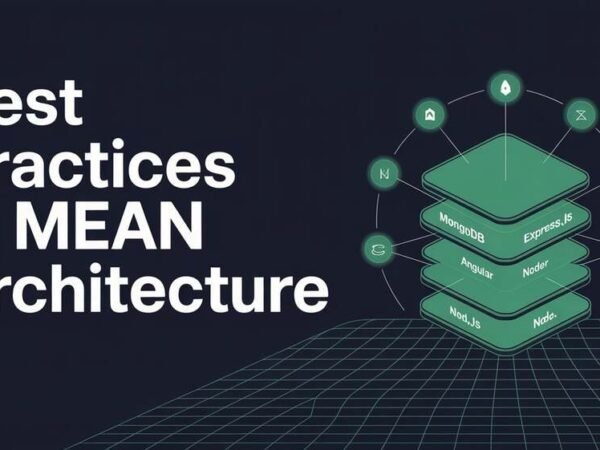Introduction to Theravada.me Leak
There are recent cybersecurity concerns surrounding the Java Sea. I leak aio-tdp have sent ripples across online communities. Thejavasea.me, a lesser-known domain, recently surfaced in digital conversations due to its role in leaking sensitive content tied to a platform or service known as AIO-TDP. This has raised concerns not only about the origin of the Leak but also about the safety of tools and platforms being used across the web. In an age where digital security is a top priority, incidents like these are stark reminders of the evolving nature of threats, the loopholes hackers exploit, and the importance of safeguarding user and platform data. Understanding the layers of this incident can help both users and developers better equip themselves to avoid future breaches.
What is AIO-TDP? Full Breakdown
AIO-TDP stands for “All-In-One Tool Deployment Platform,” though its branding may vary depending on usage across forums. It’s often associated with multi-functional tools, scripts, or frameworks bundled to automate or facilitate digital tasks—sometimes in gray or black hat contexts. AIO-TDP platforms typically offer functionalities such as data scraping, credential testing, exploit execution, and more. These features make them attractive to developers, penetration testers, and cybercriminals. As such, any data breach involving AIO-TDP could have significant consequences due to the powerful tools these platforms often integrate.
The relevance of AIO-TDP in online ecosystems lies in its utility. Used correctly and ethically, such tools can serve educational or security audit purposes. However, in the wrong hands, they can become vectors for attacks, identity theft, and fraud. The Leak of AIO-TDP data via thejavasea. I question the legal and ethical boundaries of distributing and accessing such content.
Timeline of thejavasea.me Leaks
The timeline of Theravada. I leak aio-tdp exposure is still being pieced together, but early reports began surfacing in underground forums in late 2024. By January 2025, security communities had identified several links and mirror sites connected to the java sea.me distributing downloadable archives, JSON dumps, and credential files tagged as AIO-TDP data. These files appeared to include usernames, hashed or plaintext passwords, software logs, and potentially tool source code or configurations.
Some users on Reddit and X (formerly Twitter) flagged suspicious activity tied to these files. Security researchers soon joined the conversation, verifying that some content matched data not previously seen in public breaches—suggesting a fresh, targeted leak. Discussions intensified around mid-February 2025 as more people claimed to have downloaded and tested the exposed AIO-TDP content.
How the AIO-TDP Leak Happened
The exact method behind the thejavasea.me AIO-TDP leak remains under investigation. However, early analysis points to an insider breach or a server misconfiguration. In many instances, improperly secured servers, misconfigured GitHub repositories, or unsecured admin panels serve as the entry point for attackers.
In this case, a likely scenario is that a developer or admin left backend credentials exposed, enabling attackers to access a hosting environment or file directory associated with AIO-TDP builds. Alternatively, it is also possible that one of the contributors or users of the tool intentionally leaked the data for clout or financial incentives. Once obtained, the files were uploaded to thejavasea.me—possibly due to its obscurity and less regulated nature—making the site a convenient dropzone for data exfiltration.
What Was Leaked: In-Depth Content Analysis
The scope of the Leak was broad. Data dumps tied to the Java sea. I leaked aio-tdp included:
- Usernames and hashed passwords from AIO-TDP user databases
- Source code files and configurations
- Session logs indicating active usage
- Installation files and documentation
- Screenshots and admin interface captures
Much of this data is dangerous in the wrong hands. If source code and tool configurations are exposed, malicious actors can customize, repackage, and redistribute tools with added backdoors. Leaked credentials, even if hashed, could be cracked with sufficient computing power and used in credential-stuffing attacks across various platforms. Moreover, documentation and logs give insight into how the platform operated, offering attackers a roadmap for building clones or countermeasures.
Who is Affected by the Leak?
The implications of Theravada. I leak aio-tdp are far-reaching. Users of the AIO-TDP platform may find their data, including login credentials or IP addresses, exposed directly. Indirectly, organizations and individuals who were targets of AIO-TDP tools (e.g., scraping, vulnerability testing) might also be at risk if the tools are now widely accessible.
If their tools are used unethically, developers contributing to AIO-TDP may face reputational damage or even legal scrutiny. Additionally, cybersecurity researchers and ethical hackers might need to re-evaluate their operational security if they interacted with or tested AIO-TDP in any capacity.
Cybersecurity Implications & Risks
Data leaks like this one deepen the challenges already faced by cybersecurity professionals. The availability of sophisticated tools in the public domain—especially those designed for automation and exploitation—lowers the barrier to entry for cyberattacks. The Leak of AIO-TDP files means that even novice users can execute advanced operations by following tutorials or scripts.
Moreover, it raises concerns about open-source security. If tool developers do not follow best practices for securing their code and hosting infrastructure, they expose not only themselves but also their users. The potential for malware-laced versions of AIO-TDP to spread is high, putting curious users at risk of being compromised.
Response from the Community and Authorities
Responses have been mixed. While some forums have taken down links and advised users against downloading the leaks, others continue circulating mirrors. Security researchers have published early indicators of compromise (IoCs) and file hashes to help organizations detect potential breaches.
Authorities in cybersecurity circles, such as CERT teams or private firms, have not yet made official statements, possibly due to the obscure nature of the site. However, the incident is being tracked, and any more enormous implications—especially if tied to known threat actors—will likely prompt law enforcement involvement.
Protecting Yourself from Future Data Leaks
Awareness is the first line of defense for individuals and developers. Always use strong, unique passwords for tools and platforms and enable 2FA wherever possible. Avoid downloading from unverified sources like the java sea.me, even if the content seems attractive.
Developers should conduct regular security audits, especially for platforms like AIO-TDP. Hosting environments, GitHub repos, and file-sharing tools should all be locked down with appropriate access controls. Sensitive data should be encrypted at rest and in transit, and logs should be monitored for unusual activity. These proactive steps can greatly reduce the likelihood of becoming the next target.
Conclusion: What the thejavasea.me AIO-TDP Leak Teaches Us
The Theravada. I leak the air- the episode, which is a wake-up call. It underscores the necessity of strict cybersecurity protocols, even (and especially) for platforms that operate in ethically gray zones. It also highlights how quickly sensitive data can spread online, with little to no chance of reclaiming control once it’s out there.
For users and developers alike, the key takeaway is simple: Assume nothing is ever fully private once it’s digital. Maintain vigilance, follow cybersecurity best practices, and never underestimate the impact of a single vulnerability. As the digital landscape continues to evolve, so must our defenses.
SEO-Focused FAQs
What is Theravada.me, and why is it leaking data?
Theravada.me is a lesser-known website recently linked to the unauthorized distribution of data related to the AIO-TDP platform. Its obscurity made it a prime candidate for hosting sensitive leaks.
Is AIO-TDP safe to use after the Leak?
If you’re using AIO-TDP for legitimate and ethical purposes, you should verify the source of your copy and ensure it has not been tampered with. Avoid using versions linked to the Leak.
What should you do if your data is part of the Java sea.me leak?
Immediately change all associated passwords, enable 2FA, and monitor accounts for unusual activity. If sensitive information was exposed, consider contacting a cybersecurity expert.
Can these leaks be prevented in the future?
While not all leaks are preventable, secure coding practices, access controls, and routine security audits can dramatically reduce the risk.
Where can a breach like AIO-TDP exposure be reported?
If you identify malicious use or have verifiable information, report it to CERT, a local cybersecurity authority, or relevant platform providers.













